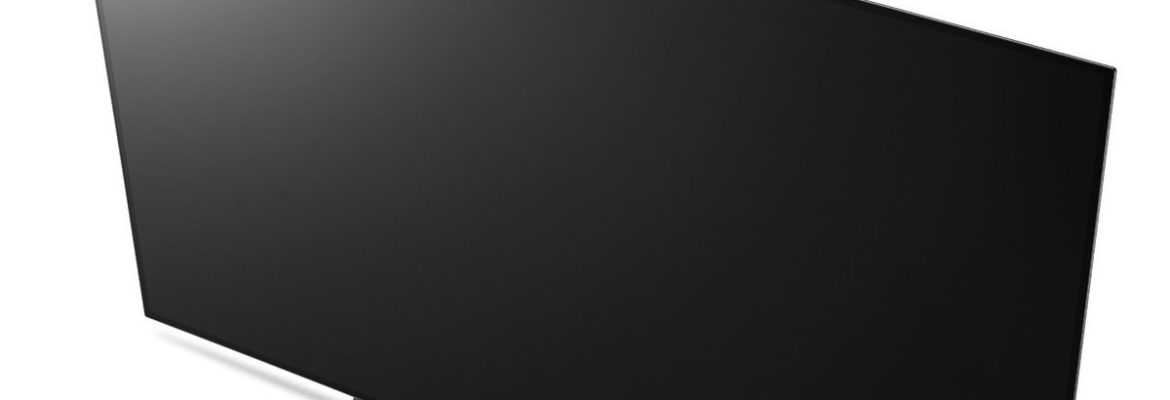Review: LG OLED65C7P UHD TV
OLED is solidified in the last few years as not only the burgeoning new standard in HD, but in mobile phone screens as well. The iPhone X’s superlative screen is OLED, and boasts the most insane colors and black levels on a mobile device we’ve ever seen. When I was offered the opportunity to review the 2017 LG 65” OLED C series TV, I had to jump on it. The earlier reviews had been stellar, and I was chomping at the bit to see this beauty for myself. I was not disappointed.
Out of the box, I was immediately taken back by the utterly think panel itself, barely a stack of credit cards thick. The unique design features a white back on the back of the panel, making up the bottom half of the unit. This houses the TV’s board, power supply and inputs. The mount the television to the wall completely flush would be tough, unless you recessed the bottom box into the wall, which may not be advisable due to heat output. But it could be done. But, personally, I like the fact once mounted, its slim panel floats in the air virtually. The installation was more difficult than anticipated, because the panel is so thin and it feels fragile, whether it is truly fragile or not. We were careful not to put too much pressure on the panel, and lifted it onto the wall mount from the bottom of the television.
Before calibrating or even reviewing a television, I do like to give the TV around 50 hours of play time. I don’t think truly has a lot of effect on televisions these days, but it is habit, and I continue it. Out of the box, this TV is already pretty spectacular. But I’ve calibrated each mode carefully, and I now have this TV looking better than any other television or projector I’ve ever worked on.
One of the biggest advantages this TV has over Samsung and other competitors is Dolby Vision. Dolby Vision is Dolby’s flavor of HDR, and without any question, blows HDR10 away pretty easily. This TV is one of the few that offers both, and using my Apple TV 4K as my reference source, and I have the ATV outputting both, matching frame rate and HDR flavor depending on the source. This is hugely important, not necessarily for HDR flavor, but definitely turning HDR and Dolby Vision off for SDR sources. Leaving HDR on will give you a very warm image on SDR material, and it changes dynamically from frame to frame thanks to the smart Dolby algorithm.
On movies encoded with Dolby Vision, the result is breathtaking. My new standard for testing HDR material is the new 4K release on Apple TV, Earth: One Amazing Day. Besides breathtaking 4K, it is encoded with Dolby Vision, and almost every frame of this title is stunning (short of a few compression issues later in the film with a couple nighttime sequences). Mad Max: Fury Road, is another show stopper, as it is already a warm, flawless transfer that knocks you into another dimension. Adding HDR makes it unparalleled.
Most ISF guys will tell you to start your calibration with Warm 2, but I personally like to start at Warm 1, and find that white balance much more lifelike and palatable. For Dolby Vision and HDR, I use Warm 1 or W30, whether my source be movies, or the default HDR gaming mode with the Playstation 4 Pro. I enabled the deep color option on both my Apple TV input, as well as my PS4 input, enabling 10-bit color on both.
For SDR sources on the Apple TV, the SDR ISF Expert mode with a few personal choice tweaks, is my choice. DirecTVNow, my Live TV source, unfortunately doesn’t switch back to SDR, so Dolby Vision runs rampant on it, and some sources look too warm. This is not a fault of the TV nor the Apple TV, but the DirecTVNow app itself for not being tagged as SDR. I’m sure they will fix this when they get around to it. SDR mode on the OLED is quite impressive, and matches or betters my former monitor of choice, the Sharp Aquos 4K 70” LED with THX certification. I turn their motion processing off on every input and source, as I am not a huge fan of the “soap opera” look this adds on every HD set. This set does it well, but it just isn’t my cup of tea. With it off, this TV gives you a much more film-like look, and matching the frame rate on the Apple TV, gives you beautiful 4K 24p viewing that is unbelievable for film sources.
For gaming, this OLED takes multiple precautions, and has an automatic panel shift that slightly shifts the picture in all four directions to keep burn in from occurring. You do not notice this mode is on, and so far I’ve had no burn-in issues at all. I have noticed a black level that is ridiculous, with black images that look like no light at all. Fantastic. The PS4 Pro gaming is also next level, with second-to-none imaging and super fast response time that exhibits virtually no lag. I use the gaming mode on both HDR and SDR gaming from the PS4 Pro, with again only a few minor tweaks for personal preference. I was a mildly excellent solider on Battlefield 1, and now I believe I am actually quite excellent.
LG 65OLEDC7P is the best TV you can buy right now, until the new 8P hits shortly. Hard to believe the image will get even better than it is now, but certainly new feature sets will make the new TV quite appealing. For the money, this is the best, and nothing is close actually. Is it morally wrong for me to be in love with a television? Well, I am, and I am not ashamed.

